




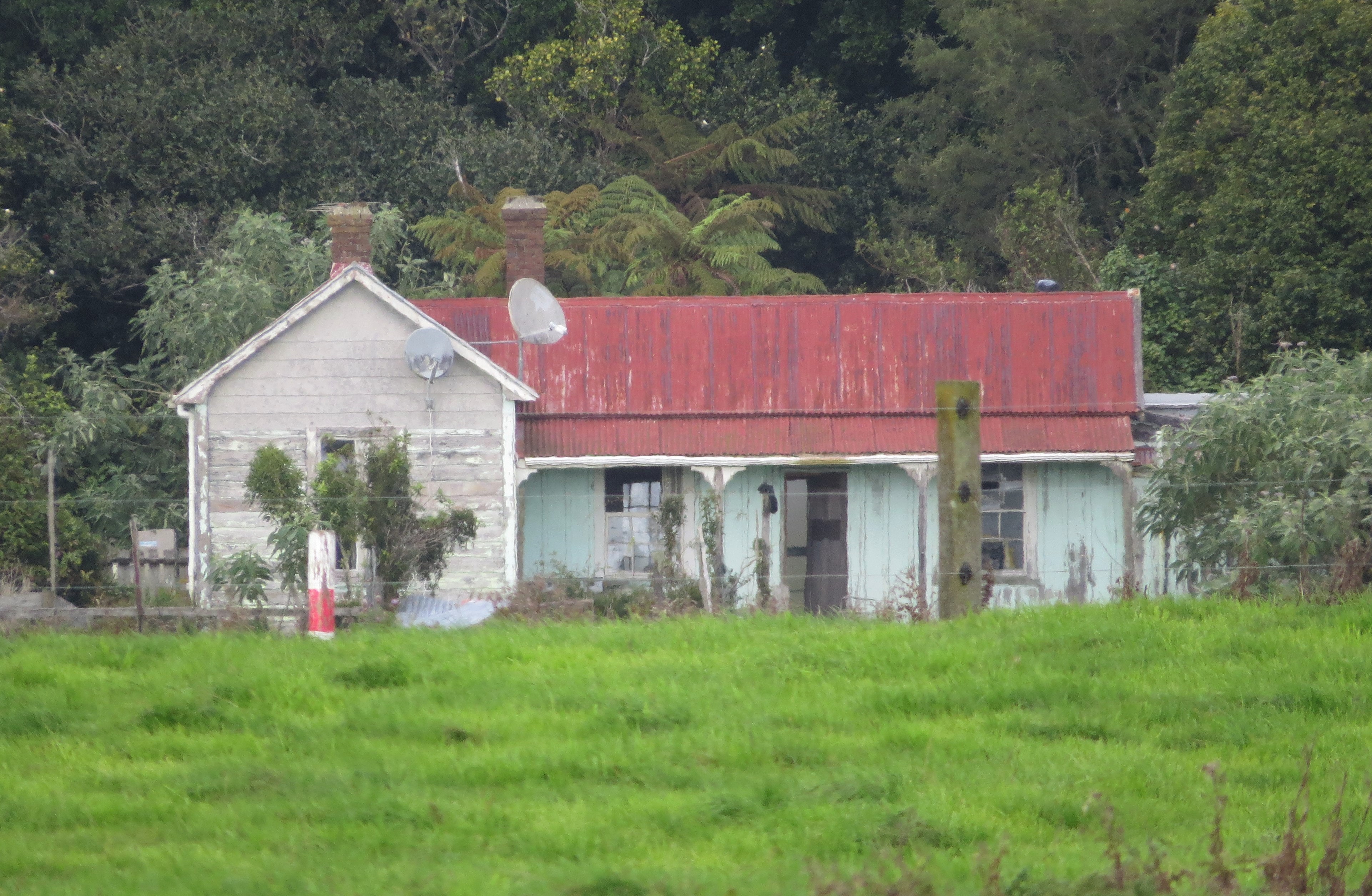
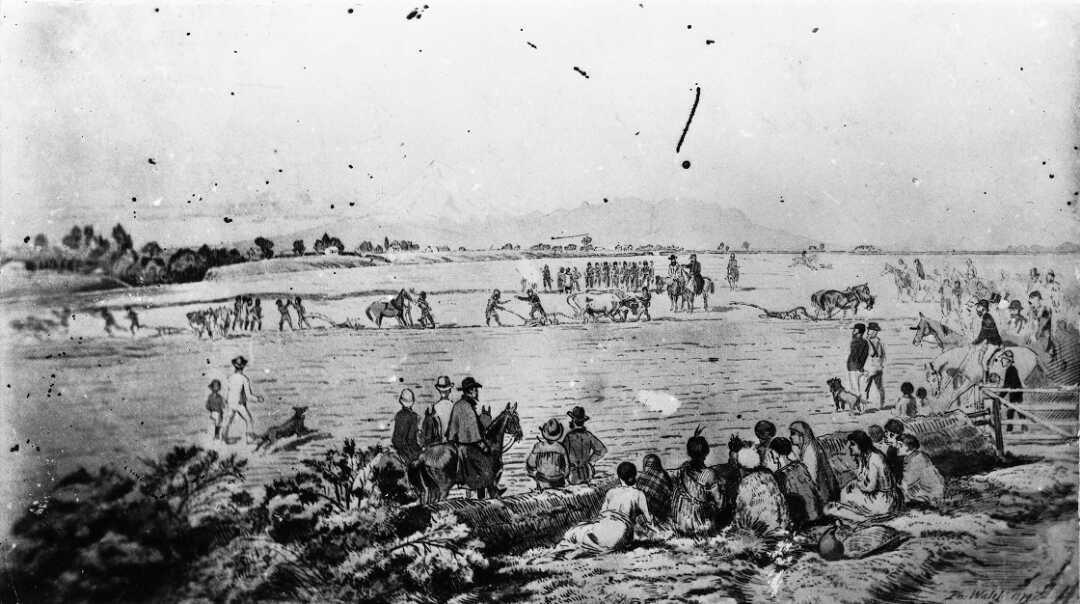
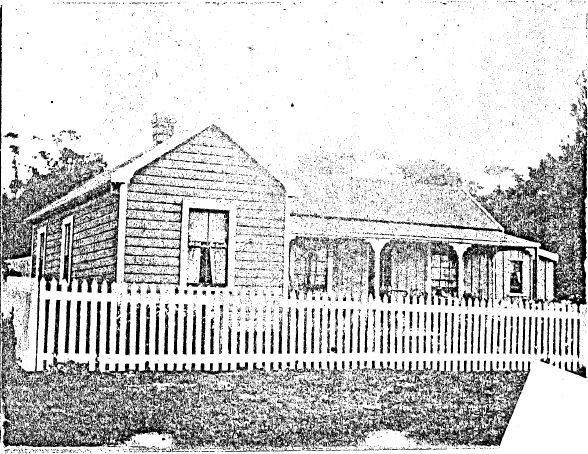
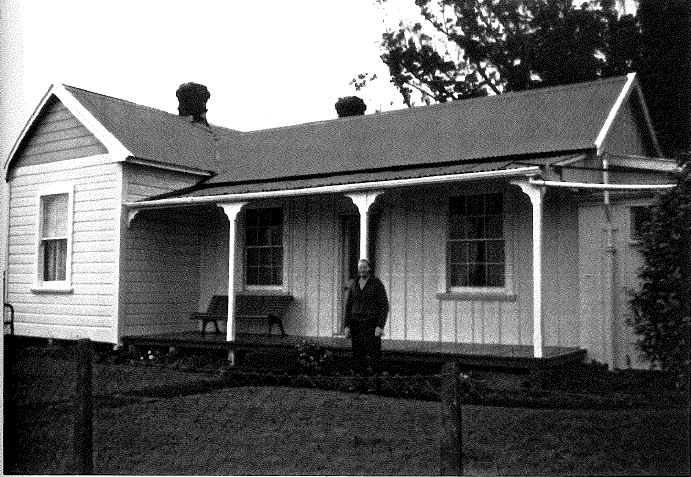
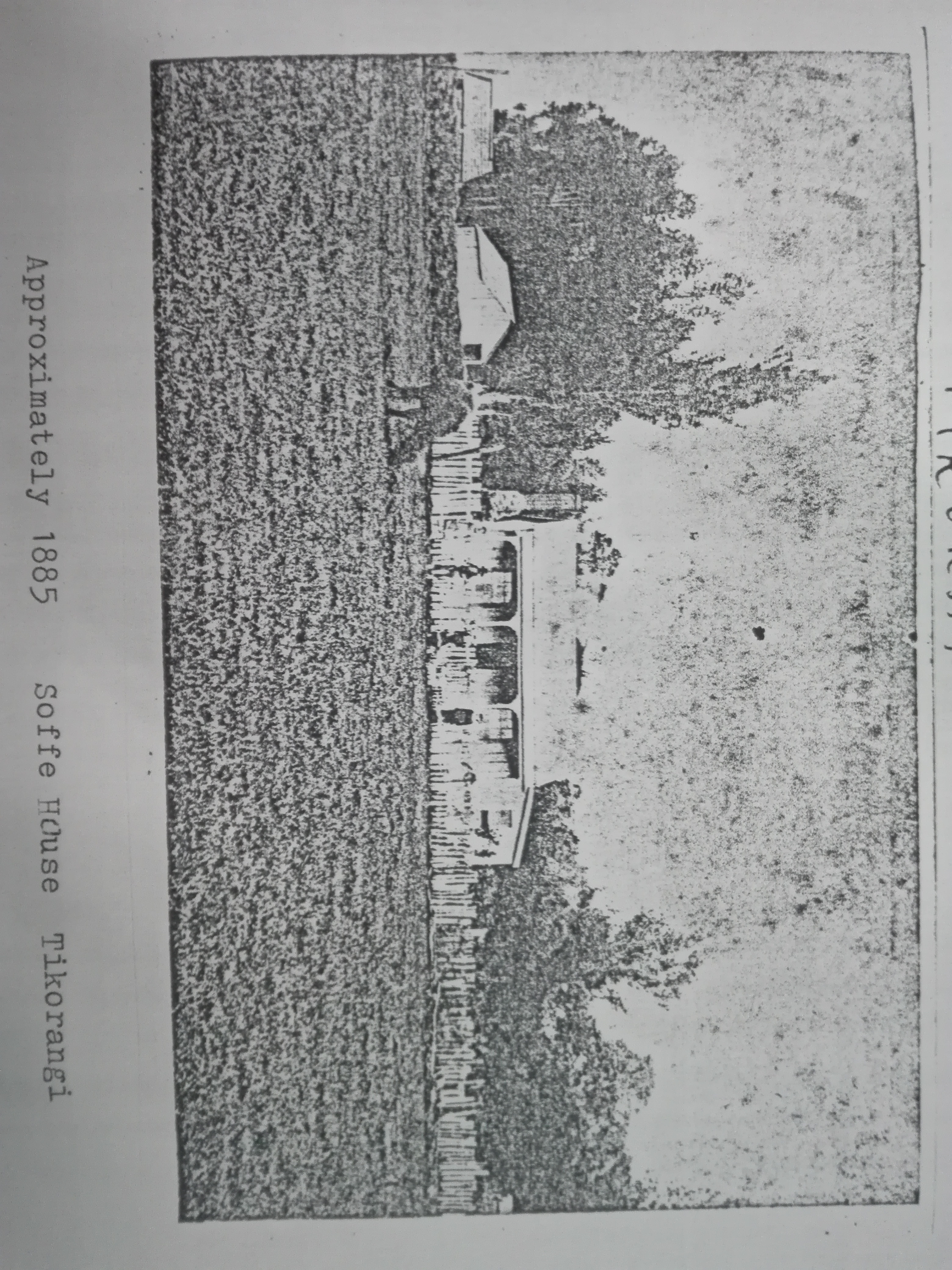
Whilst the exact date of construction for this extended board and batten cottage is unknown, the original portion likely dates to between the 1840s and 1860s.
A history of Waitara District buildings compiled in the 1980s, states that the original board and batten section of the cottage was constructed in New Plymouth in 1847 and then shifted to this site, possibly by bullocks, and presumably in pieces. The same article also notes that the larger section of the home clad in rusticated weatherboard was added in 1890. However, the book does not note the source of this information so it cannot be verified.
What we know is that Section 11 of Tikorangi District was granted to John Johnson during 1868. However, before officially receiving the grant, Johnson sold the section to John Elliot in September 1866. Elliot owned the property until March 1872, when it was purchased by E. W. J. Gregory. After only a few years Gregory sold the section to William Jury in June 1875. The property was leased to W. Crump from October 1884, and several years after the death of Jury, purchased by Crump in August 1891. Crump died in 1912, and the property appears to have been leased by the Trustees of the Tikorangi Co-op for a number of years, before finally being sold to ? Soffe in February 1926.
During William Jury's ownership, the property was the location of a significant protest - in July 1879, a number of Māori ploughed Jury's farm in protest over his occupation/ownership of the land. The first act of ploughing occurred on the 22 July, and at the initial court trial, recorded in great detail by the Taranaki Herald on 25 July 1879, Jury recalled that:
Eighteen men came and ploughed the grass on the other side of the Paraka Stream opposite my house. They had six ploughs at work. Two men were engaged at each bullock team, and one at each horse team. There were four bullock teams and two horse teams. They must have commenced at about 6 o'clock, for when I got up in the morning at 6:30 they were at work then.
The Armed Constabulary were sent to the site, but as no one was ploughing at the time, they were not arrested. However, the following day, July 23rd, word was received at Waitara that Jury's field was again being ploughed, and this time when Major Tuke, Major Brown and the Armed Constabulary arrived at Tikorangi, the ploughing was still occurring, and 24 Māori were soon arrested; one other also requested to be arrested as he said he had also been involved in the ploughing. The prisoners were marched to Waitara, then escorted by special train to New Plymouth, where they would stand trial later that week. Following the evidence being heard in New Plymouth, it was decided that the 25 accused would stand trial at the Supreme Court in Wellington; the prisoners were subsequently transferred to gaol in Wellington to await trial.
Given the historic importance of the protest as precursor to the events at Parihaka, this cottage and surrounding farmland, form a unique landscape associated with a significant event in the history of not only Taranaki, but New Zealand.
The cottage being clad in vertical board and batten is also significant, as board and batten cladding was widely used in cottages constructed in New Plymouth District between the 1840s and early 1870s - more so than any other part of New Zealand, and may be seen as a form of regional variation in building styles that contributes to the unique architectural heritage of New Plymouth District.
Related item:
Tikorangi Rural District Section 11, Taranaki Land Deeds Index I7 page 460. (Archives New Zealand)
Please do not reproduce these images without permission from Puke Ariki.
Contact us for more information or you can order images online here.